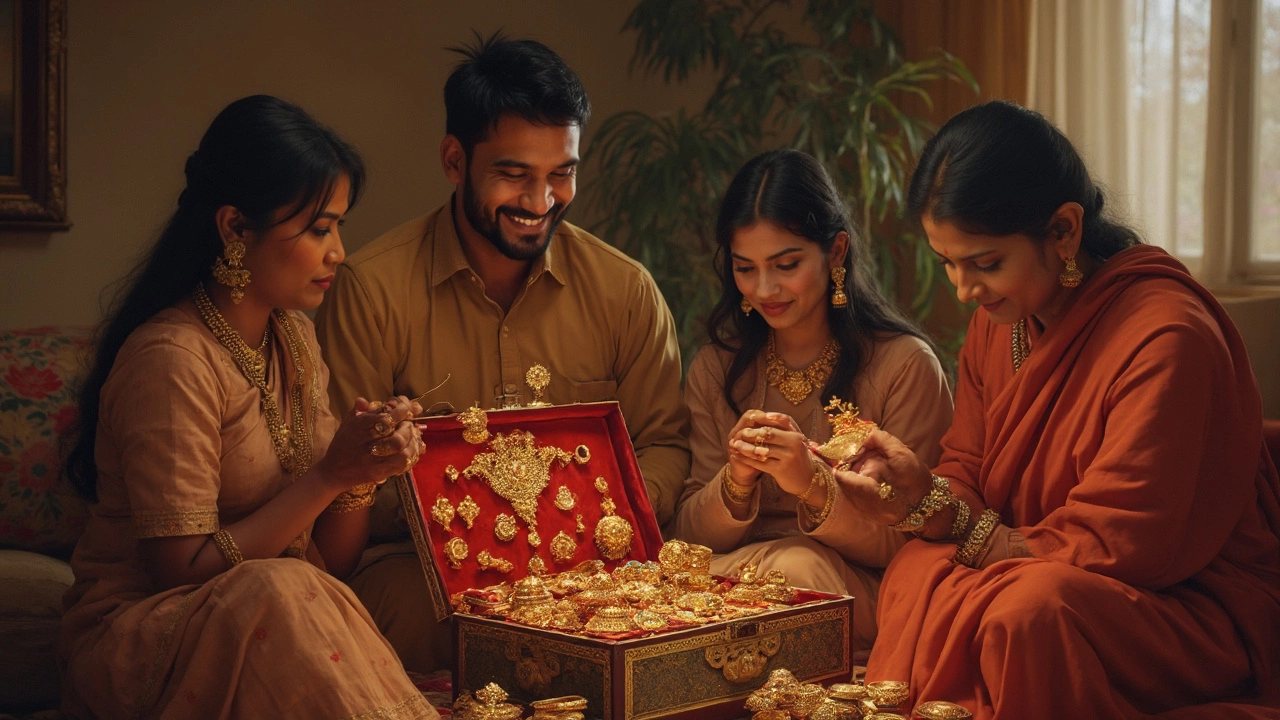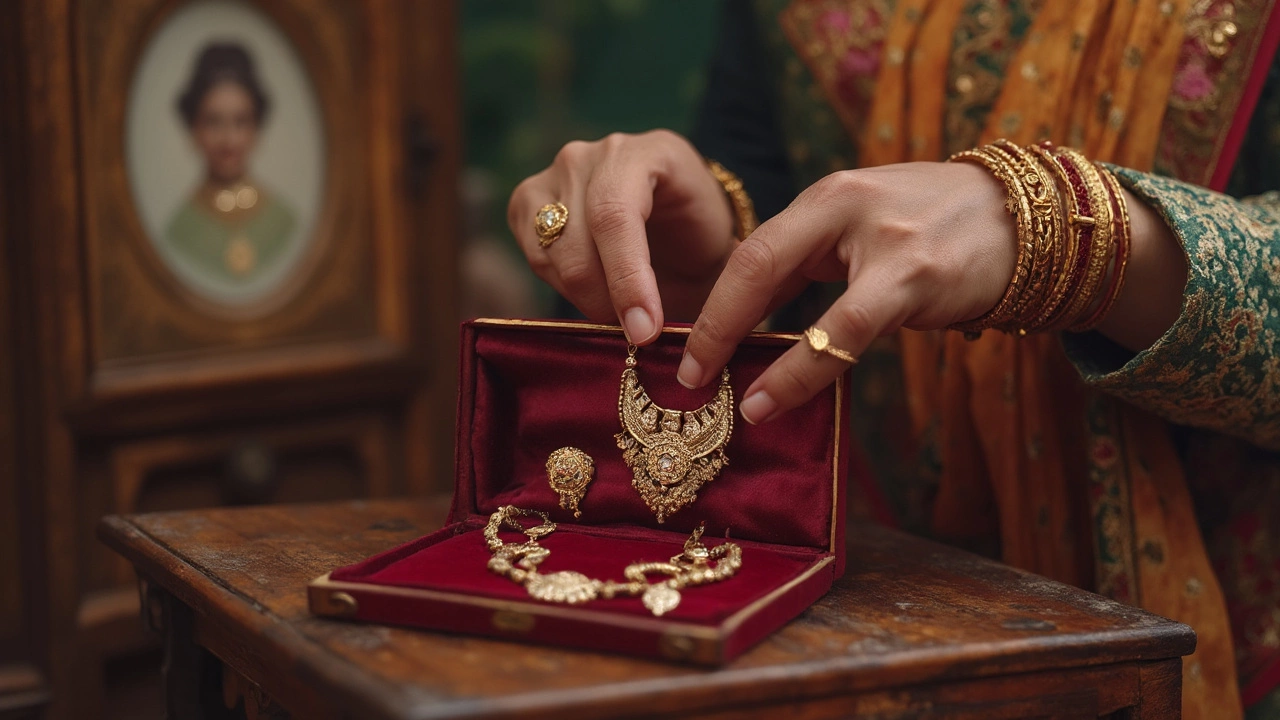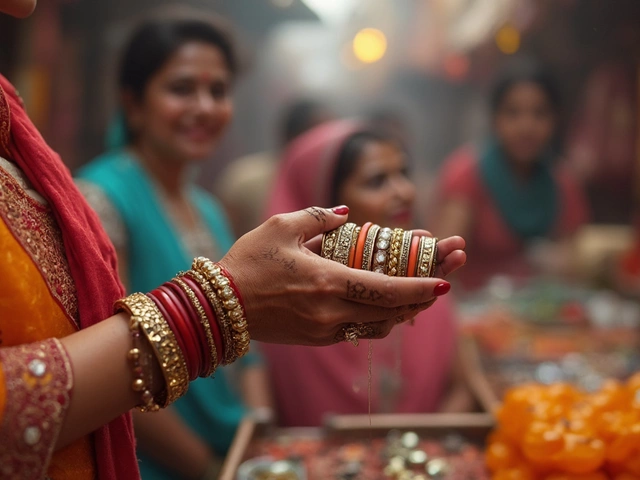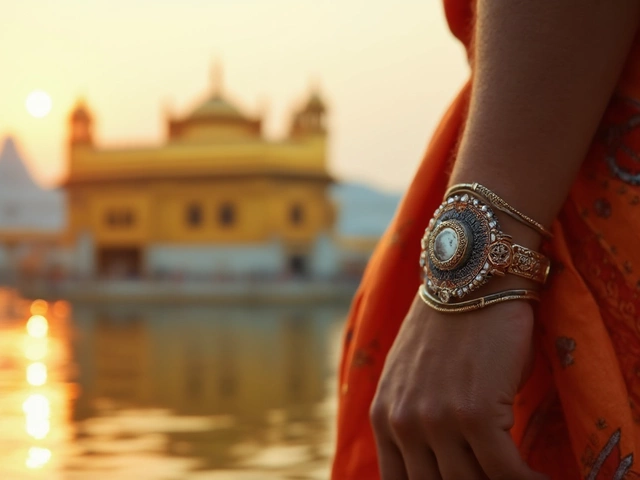
Most people don't realize just how easy it is to mess up with antique jewellery when someone dies. Between the family drama, paperwork, and just figuring out dinner, that box of vintage rings or grandma’s pearl necklace can get lost in the chaos. One wrong move and you could lose something valuable — or worse, accidentally destroy a piece of your family's history.
One of the biggest mistakes is rushing to sort or empty out jewellery. Emotions run high, relatives come knocking, and suddenly things go missing or get split up before anyone really knows what’s there. Treasure doesn’t always look shiny—an old brooch tucked in a sock drawer might be worth more than it seems. The quiet little ring in a dusty velvet pouch? Sometimes that’s real gold, not costume stuff.
- Rushing the Sorting Process
- Ignoring Proper Storage and Handling
- Skipping Appraisals and Documentation
- Selling or Gifting Too Soon
Rushing the Sorting Process
Antique jewellery rarely announces itself. Most pieces get stuffed in drawers, old boxes, or sewing kits, and families often don’t spot their importance right away. When someone passes, relatives sometimes rush to clean out belongings, just wanting a tidy home or to keep peace in the family. But hasty sorting can mean valuable pieces get tossed, donated, or split up carelessly. Once a piece is lost, you can't get it back, and it could be worth thousands—or have priceless sentimental value.
The British National Association of Jewellers found that up to 50% of inherited antique jewellery is either undervalued or sold for way less than it's worth, just because families move too quickly. Even stuff that looks fake or “just old” might be solid gold, platinum, or feature rare gemstones. Victorian and Art Deco rings, for example, often get confused for costume jewellery if nobody checks the hallmarks or asks an expert.
- Check all possible spots: Jewellery might be hidden in coat pockets, teapots, or even under floorboards. People have found diamond brooches in cookie tins—no joke.
- Take photos as you go: Documenting every item helps avoid arguments later. You’ll also have proof in case something goes missing.
- Pause before dividing things up: Don’t just hand out pieces or toss anything. Wait until everything is reviewed by someone who knows antique pieces.
| Common Mistake | What Can Happen |
|---|---|
| Tossing “old” jewellery | Loss of valuable or rare items |
| No documentation | Arguments and lost family history |
| Not using an expert | Massive undervaluing or misidentification |
Give yourself time. Sorting slowly is the surest way to make sure hidden treasures stay in the family and don’t disappear in a rush.
Ignoring Proper Storage and Handling
This one trips up more families than you’d think. Antique jewellery might look tough—hey, it’s survived for generations—but it’s actually pretty sensitive to where and how it’s kept. Stuff like moisture, sunlight, and even the metal in modern safes can mess up old gems and precious metals. That’s how things end up tarnished, scratched, or cracked when all you wanted was to keep them safe.
Here’s a mind-blowing fact: according to the Gemological Institute of America, even a little exposure to everyday chemicals (think cleaning sprays or perfume) can permanently ruin certain antique gems and pearls. I learned that the hard way with Luna the cat—she once knocked a tray of rings off the counter and I scrambled to pick them up, but totally forgot to wipe off the table cleaner. Rookie mistake.
“Wrapping antique jewellery in plain tissue paper, tossing it in a plastic bag, or leaving it on a windowsill for a week—all common mishaps—can take centuries of beauty and, honestly, trash it in a few days.” — Eleanor Tate, Conservator, British Museum
If you’re handling antique jewellery, here’s what you really need to do:
- Always store pieces separately. Soft pouches or cloth-lined boxes keep chains from tangling and avoid scratches from gemstones rubbing together.
- Skip plastic bags—they trap moisture. Go for acid-free tissue or breathable fabric if you have to improvise.
- Keep everything away from direct sunlight and humidity. Closets or dedicated jewellery boxes away from heaters or windows are way better than a random drawer.
- Never clean antique jewellery with home chemicals. Just use a dry soft brush for dust, and only let a pro handle real cleaning jobs.
These storage basics go a long way. Have a look at how fast different storage mistakes can damage your heirlooms:
| Storage Mistake | Possible Damage | Timeframe |
|---|---|---|
| Plastic Bag | Tarnishing, trapping moisture | 1 week |
| Sunlight Exposure | Gem discoloration, fading | 1-2 weeks |
| Contact with Chemicals | Permanent stains, surface damage | Immediate to a few days |
| Stacking Without Padding | Scratches, broken clasps | Days to weeks |
If you’re not sure what material you’ve got, don’t guess—look for a local jeweller or museum expert who can point you in the right direction. Small details in storage make a huge difference in keeping those old treasures ready for the next generation (or the next dog named Sparky who snoops around the closet).

Skipping Appraisals and Documentation
Let’s talk about what happens when you skip getting that box of old jewellery checked out by a pro. You’re not just guessing what it’s worth—you could be tossing away history, money, or something way more special than you realized. Antique jewellery can surprise you; something that looks simple might actually be a rare piece from the Victorian period or even earlier. In 2022, a UK family almost sold a 1920s sapphire brooch at a yard sale for £20. A quick visit to a jeweller revealed it was worth over £3,000. Totally changed their plans!
If you don’t stop and get items appraised you might:
- Undervalue unique pieces and let them go for cheap.
- Miss out on insurance coverage if the worst happens.
- Lose clues about your own family history (engraved dates or makers’ marks tell stories).
- End up with family arguments because no one knows what’s really valuable.
The paperwork matters too. Having a proper description, a value, and a few good photos makes things way easier later—especially if you’re fighting about who gets what, or if you ever need to file a police or insurance report.
| Task | Why It Matters |
|---|---|
| Get appraisal by a certified jeweller | Reveals true value and history |
| Take clear photos of each piece | Helpful for insurance, reference, or proof |
| Save receipts or old paperwork | Shows provenance, boosts value |
| Write down unique details | Easy to ID and helps with future sales |
Even my neighbor, Mrs. Patel, once told me she found a scrap of handwritten notes in her grandma's jewellery box, listing who gave her what and when. That scribbled list turned a mystery ring into a sentimental keepsake. Don't rely on memory—write things down. The little details might save a big headache later.
Selling or Gifting Too Soon
This is the part where a lot of people trip up. It feels natural to want to give away or sell jewellery after someone dies—maybe to help with funeral costs, maybe just to move on. But if you skip a few important steps, you could end up short-changing yourself or accidentally handing off something truly valuable. Vintage pieces are getting rarer, and some old-school designs are worth way more than you’d guess, especially now that younger folks are collecting again.
One major trap: selling family jewellery to the first buyer who comes along. Pawn shops and quick online buyers usually offer much less than actual value—sometimes less than half, especially for antique jewellery with design marks, rare gems, or unique metalwork. There was a report from the National Association of Jewellers showing that heirloom-quality pieces can go for 200% more at a specialized auction than at a pawn shop or local gold recycler.
Same goes for gifting. You might feel pressure from family to hand things out fast, especially if the items remind people of the person who passed. But if no one really knows the value—or who promised what to whom—fights can start, or someone accidentally walks away with a ring worth five figures without realizing it.
- Always get a proper appraisal from a certified jeweller who knows antique pieces (not just your typical mall jewellery store).
- Take photos and document every piece before anything leaves the house. You’ll thank yourself if questions come up later.
- Delay selling or gifting for at least a few weeks, so you can think clearly and get advice.
| Where Sold/Gifted | Average Sale Price (% of value) | Risk of Loss/Damage |
|---|---|---|
| Pawn Shop | 40%-60% | High (quick handling, little expertise) |
| Specialist Auction | 85%-120% | Low (professional handling) |
| Private Family Gifting | Varies (0-100%) | Depends (possible mistakes, rushed decisions) |
Take your time. Antique jewellery carries family stories and serious value. Skipping a bit of patience can cost both.


